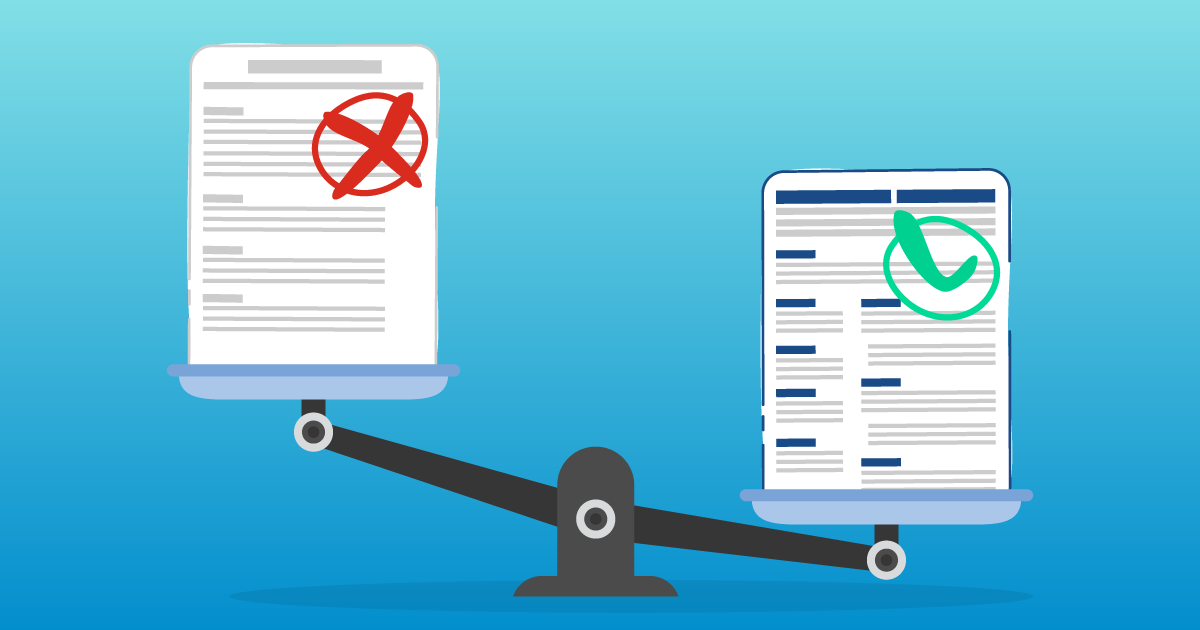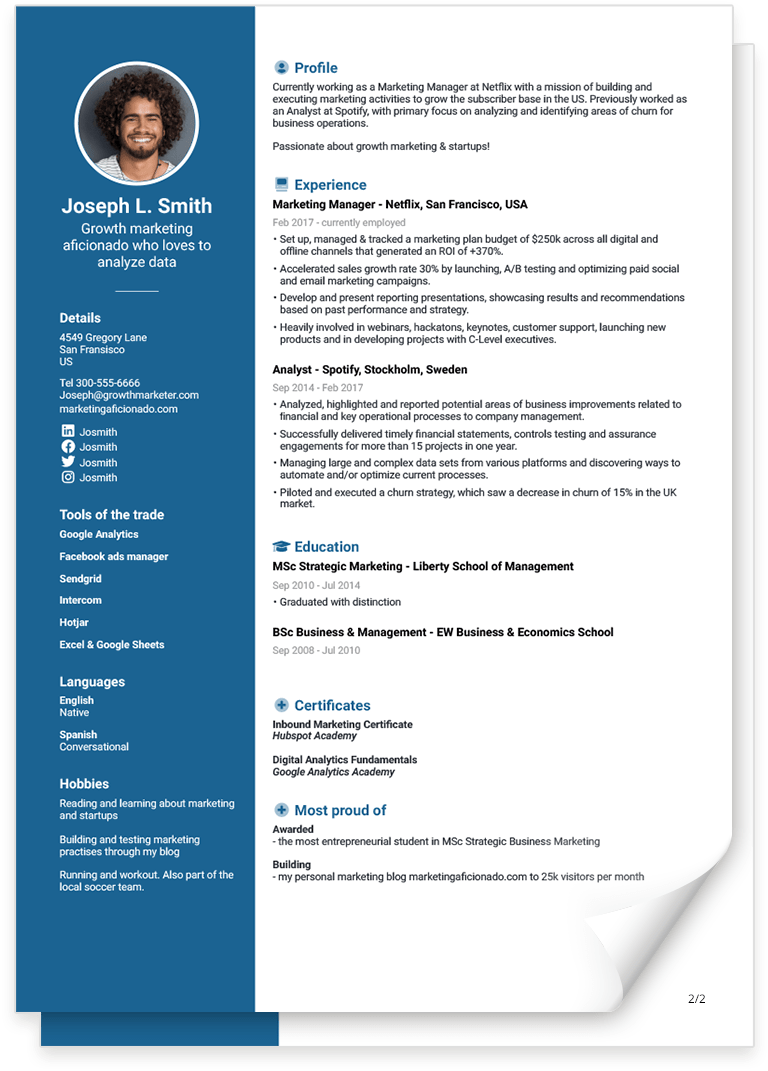Biodata Resume Format [Guide & Examples]
![Biodata Resume Format [Guide & Examples]](https://jofibostorage.blob.core.windows.net/blog/Biodata-format-small.jpg)
Hunting for a job can be a bit of a jungle. Just picture all the different ways of describing the same role in a company like Account Manager. An Account Manager is easily also a Client Relations Manager, a Sales Manager, an Account Supervisor, a Business Development Manager, and a Customer Success Manager. The same holds true for the documents we need for a job search. There is the classic resume, a CV, cover letters, and now also a biodata.
However, a biodata is not for everyone. In the following you will learn everything about questions such as:
- What is a biodata?
- Who uses a biodata?
- Biodata vs. resume - what are the differences?
- What should I include in a biodata?
- Biodata example
What is a biodata?
A biodata, short for biographical data, can be several types of documents. Here are four biodata definitions:
- An alternative word for a resume or CV in South Asia
- A supplement to a classic resume
- A document used for marriage purposes
- A form used to collect personal data for use in research and certain institutions
The biodata formats we’ll be focusing on here are number one and two; an alternative word for a resume and/or a supplement to a classic resume.
So, a biodata is just another word for a resume or CV. However, in a biodata you will typically put a lot more emphasis on information that you wouldn’t normally add in a classic resume. For one thing you would never add information about your religion or skin color in your standard American resume or in a European CV. However, this is quite standard information in a biodata. More on this later in the article.
First let’s take a look at who uses a biodata.
Who uses a biodata?
A biodata is mostly, if not exclusively, used in South Asia. More specifically in India and Bangladesh. Here, there is a tradition for using a biodata instead of a resume.
The term bio-data is mostly used when people apply for government jobs, or for research grants where one has to submit descriptive essays. Biodatas are not common in the international markets where personal information like age, gender, and religion are considered too sensitive to be submitted by candidates for job positions.
But that’s actually not all it’s used for. A biodata is also often used as a form of marriage resume. However, we will not be going into detail with that particular use of biodata in this article. Our focus will be on the use of a biodata in relation to a job search.
Biodata vs. resume - what are the differences?
Now, as I mentioned earlier, you’ll probably notice that there are several documents when it comes to a job search process. There’s the resume, the CV, the cover letter, and now also the biodata. But what exactly are the differences between them?
We’ve already covered the differences between the American resume and the European CV here. So in order to make things easier for now we’ll equate the resume and the CV here. Meaning CV is to be understood as equivalent to the American resume.
Okay, now that we’ve got that settled, let’s look at some of the differences between a biodata and a resume.

What should I include in a biodata?
Let’s take a look at what to include in your biodata for job search. There is some standard information but also a lot of other information you can include if necessary.
1. Add a profile (or summary)
First of all, you should add a profile text for your biodata. Or maybe you’re more familiar with the terms summary or objective. The three terms are more or less the same and will appear at the very top of your biodata document.
Make sure you highlight your strong personal traits (also known as interpersonal skills) while you at the same time show the recruiter how the company will benefit from hiring you. Blend in your work history as well.
Whenever possible, highlight your achievements by using numbers to quantify your results.
Profile biodata example
Software Engineer with 8+ years in the IT industry. Highly skilled in developing and testing mobile apps. Identified and fixed up to 92% of software bugs affecting apps’ stability. Eager to leverage coding skills to improve the quality of life of average users, and help company XYZ grow rapidly.
2. Personal information
The next part of your biodata should include your personal information. There are some mandatory pieces of information that you should always include but also a lot of extra information you can add depending on the specifications in the job ad.
See the list below for inspiration.
- Current position
- Phone number
- Email address
- Contact details
- Place of residence
- Postal address
- Date of birth
- Nationality
- Marital status
- Parents’ names
- Gender
- Religion
- Height
- Complexion
- Race
- Salary
- Hobbies
- Interests
- Strengths
- Character traits
Notice: If you’re applying for a job in a western country a lot of the above information will be considered either too sensitive or even inappropriate to add to a resume. Specifically this applies to numbers 7 through 20.
3. Education
In the next section of your biodata is your education. Here you should add all relevant information such as school, years of attendance, and any relevant activities, achievements, or course work. Make sure you add the information in a chronological order.
Education biodata example
2005—2013
Mumbai Public School
Activities:
Member, Math Club Class V-VII
2013—2017
1. K. Bagrodia Public School, Rohini
High School Diploma
Activities:
Member, Math Club, Class IX-XII
Member, IT Club, Class IX-XII
2017—2019
Bachelor of Computer Science
University of Mumbai
CGPA: 8.5
Specialization: Designing, implementing, and maintaining system software
4. Work history
This last part of your biodata is almost self explanatory. Here you add your work history - your professional experience and skills. But don’t just name a list of all the companies you’ve worked for your entire life. There’s much more to this part than that.
First, you should try to note down the keywords from the job ad. If the description looks anything like this:
Role and responsibilities:
- Design, develop and maintain applications for various devices.
- Write well-designed, testable code.
- Modifying existing code to add new features
Then it will be safe to say that the company is looking for someone with experience within app design, development, maintenance, coding, testing, analysis, and modification.
Your time to shine. Use the words from above to write your previous work experience into your biodata. Show the employer that you’re able to fill the role by tailoring it to match their needs exactly.
Work history biodata example
June 2019—present
Freelance Software Engineer
- Designed and developed a grocery shopping app for iOS that uses voice commands to add individual items. The app slashed average consumer’s grocery shopping time time by up to 95% while increasing basket end value with 45%
- Modified and upgraded the code of a work out app that allowed it to display members’ signups in real-time
- Stress tested an Android taxi-hailing app for a startup company
Key takeaways
Nowadays, a biodata format is primarily used as an alternative resume format (or CV format if you prefer). It’s most common in certain South Asian countries and should follow this build-up:
- Profile / objective / summary
- Personal information
- Education
- Work history
If you’re ready to start building your own job search documents, click the button below here and check out our resume templates.
![The CV Format Recruiters Hate [examples]](https://jofibostorage.blob.core.windows.net/blog/the-cv-resume-format-recruiters-hate_top.jpg)


